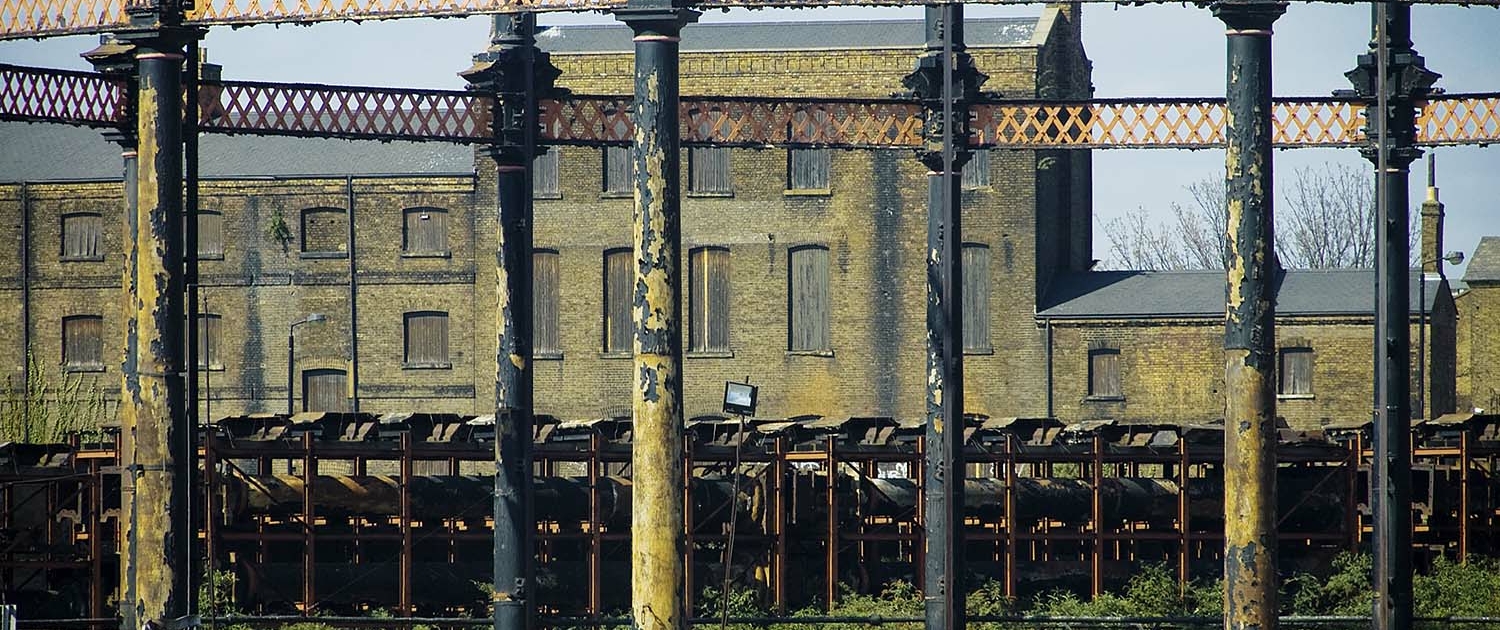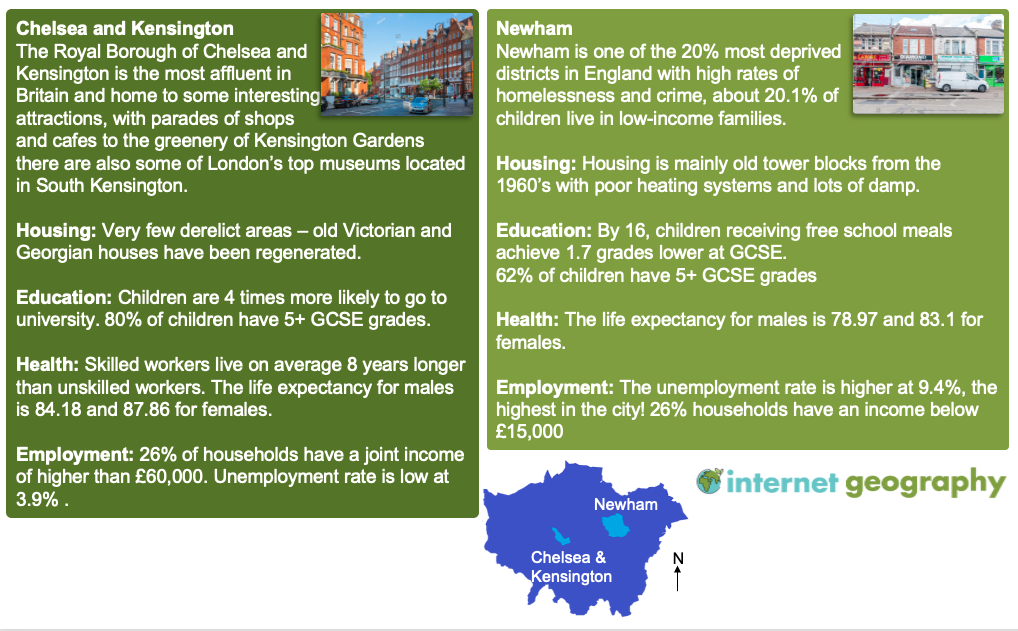Urban deprivation and inequalities in London
Explore differences in social and economic deprivation in London
Dereliction, building on brownfield and greenfield sites and urban sprawl in London
Explore dereliction, building on brownfield and greenfield sites and urban sprawl in London
Pollution in London
Explore pollution issues in London and how the city manages waste
Urban deprivation and inequalities in London
What is social and economic deprivation?
Although London is the wealthiest city in the UK, it would be a mistake to assume that it is not also a city with significant deprivation. Economic and social deprivation is an issue in London, affecting more than 2 million individuals who struggle with poverty. Deprivation refers to the extent to which individuals or communities lack the fundamental necessities required for a decent quality of life, such as employment opportunities, financial stability, adequate housing, and essential services.
How does deprivation vary between areas of London?
London is a huge city, and to make it easier to run, it’s divided into 33 smaller parts called boroughs. These boroughs are also a good way to see how different city areas are doing.
The map above shows the number of people in each borough who receive state benefits, which means they receive government assistance when they're not working. The boroughs with the highest number of people on benefits are often the most deprived. This is an economic indicator of deprivation.
A social measure of deprivation is life expectancy. The more deprived a person is, the lower their life expectancy tends to be. The map below shows life expectancy at birth for females by London borough. Life expectancy ranges from 87.86 years in Kensington and Chelsea to 81.66 in Barking and Dagenham. This indicates life expectancy across London is uneven, suggesting some areas are more deprived than others.
Comparing the maps for out-of-work benefits and life expectancy reveals a notable link. Areas with fewer people on out-of-work benefits typically have a longer life expectancy. In contrast, areas with a high unemployment rate have a lower life expectancy.
Why is inequality still an issue in London?
Although London has experienced economic prosperity for many years, housing, education, health, and employment disparities continue to be significant challenges. Inequities in life expectancy persist. The lowest life expectancy rates in London's most deprived areas are closely connected to inadequate nutrition, housing, education, and job opportunities. In all deprivation indicators, Kensington & Chelsea, one of London's wealthiest boroughs, outperforms Newham, one of the poorest boroughs.


